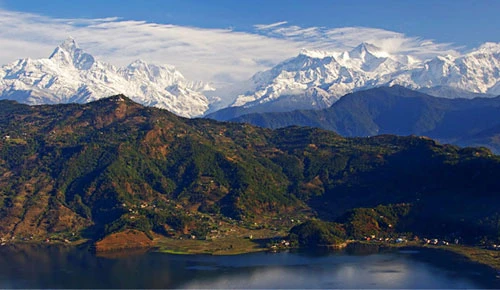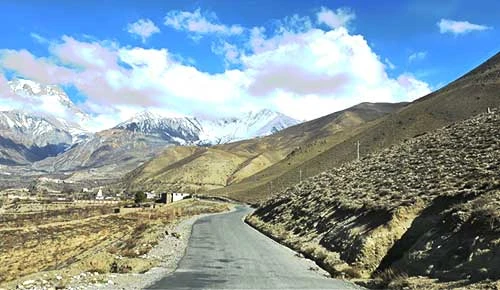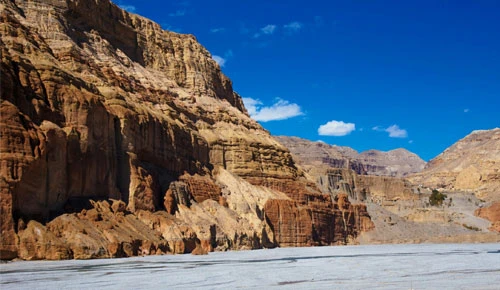Short Trek to Everest Base Camp
A short trek to Everest base camp is one of the most famous high-altitude treks that can be completed in 7 days. This shortest trek to Everest base camp is especially designed for semi-professionals and professional hikers.
This trek is the quickest, shortest and most rapid trek to base camp. It offers a unique opportunity to experience the beauty of the world's highest mountain without having to take too much time off work or stay at a high altitude for too long.
The itinerary does not include any days for acclimatization, so it is essential to be physically and mentally fit and properly prepared for the altitude The trek takes the hiker to the Khumbu region offering the unique sherpa culture and beautiful mountain views.
On the last day of the short trek to Everest base camp, hikers can take a scenic helicopter ride back to Kathmandu. This gives the trekkers a bird's-eye view of the Himalayas and is an experience they will never forget.
Is It Possible Do Everest Base Camp in Shortest Timeframe?
Yes, it is possible to complete a trek to Everest base camp in shortest timeframe. Generally the traditional and mostly recommended itinerary is 14 days long. However, due to the high demand for shorter treks, we have created this package.
This shortest trek follows the same uphill route as a regular EBC trek but includes a helicopter ride back from Kala Patthar- a famous viewpoint that offers a stunning view of Mount Everest and is also a go-to destination in Everest region.
Itinerary for Short Trek to Everest Base Camp
Days | Activities |
Day 1 | Flight to Lukla 2,860 m (9,380 ft), Trek to Phakding (2,610 m/8,562ft) |
Day 2 | Trek to Namche Bazaar (3,440 metres/11,286 ft) |
Day 3 | Trek to Tengboche (3,867 metres/12,687 ft) |
Day 4 | Trek to Dingboche (4,410 metres/14,470 ft) |
Day 5 | Trek to Lobuche (4,940 metres/16,210 ft) |
Day 6 | Trek to Gorak Shep (5,164 metres/16,942 ft) and Everest Base camp (5,364 m/17,598 ft) and Stay at Gorak Shep |
Day 7 | Hike To Kala Pattar (5,643 m/18,514 ft) and Helicopter flight to Kathmandu (1,400 metres/4,600 feet) |
Table of Contents
![Hotel Everest View Trek 4 Days]()
Hotel Everest View Trek - 4 Days
Duration: 4 Days
Trekking in Nepal is a popular choice for adventurers all over the world, and the Everest region is a top destination. The ways to get to Everest base camp vary in time and difficulty, with some being very hard. But there are also ways that are faster and easier.
Mount Everest is the tallest mountain in the world, and seeing it is always awe-inspiring. Trekking in the Everest area gives you a chance to see this amazing mountain up close, and some people may even go a long way just to catch a glimpse of it.
Major Attraction
- World's highest peak and the ultimate destination of the trek, Mount Everest.
- Stunning Himalayan views including Ama Dablam, Lhotse, Nuptse, Cho Oyu, and so on.
- Experience the unique Sherpa culture and traditions, including their friendly hospitality
- Namche Bazaar- a bustling market town and the gateway to the Everest region.
- A beautiful and historic Tengboche monastery, with stunning views of Everest and surrounding mountains.
- Rewarding hike to Kala Patthar that offers incredible panoramic views of Everest and the surrounding mountains.
- Sagarmatha National Park - home to a variety of wildlife
- Largest glacier and a stunning natural wonder in the Everest region, Khumbu Glacier.
- A great opportunity to meet other like-minded travellers from all over the world and forge lifelong friendships.
Pro and Cons
Here are some of the pros and cons of a short trek to Everest base camp.
Pros:
- Experience the beauty of the Himalayas and the stunning views of Mount Everest up close.
- Opportunity to interact with the Sherpa people and learn about their culture and traditions.
- A shorter trek requires less time commitment and is more budget-friendly.
- The trail is well-established, making it easy to navigate.
- A shorter trek is generally less physically demanding, making it accessible to more people.
Cons:
- The shorter duration of the trek means less time to acclimatize, increasing the risk of altitude sickness.
- The trail can be crowded, particularly during peak trekking seasons.
- The accommodations and facilities can be basic and sometimes overcrowded.
- Limited time for rest and exploration may result in missing out on some experiences along the way.
- Weather can be unpredictable, and changes can impact the trek.
Difficulty
The short trek to Everest base camp is moderately difficult and takes you through beautiful scenery, local villages, and high mountain passes. Even though the trek is rapid and does not include acclimatisation days, the itinerary is designed in a way to minimise the possibility of altitude sickness.
This trek is suitable for semi-professional and professional hikers who are in good shape and have made the right preparations. At the end of the trek, the journey's highlight awaits a helicopter flight back to Kathmandu that provides a bird's-eye view of the majestic Himalayan peaks. It's an experience that will stick with you for the rest of your life and make all the hard work worthwhile.
Visual Experience
The visual experience during a short trek to Everest base camp is truly breathtaking. You will see magnificent views of snow-covered mountains, glaciers, and valleys that are beyond what you could ever imagine. During the trek, you'll hike through rough terrain and beautiful villages, and get a glimpse into the local culture and way of life.
Once you arrive at the base camp, you'll be surrounded by towering peaks and glaciers, with the world's highest mountain standing right in front of you. The helicopter ride back to Kathmandu is an unforgettable experience, as you fly over the Himalayas and take in the stunning views of the mountain range from above. It's truly an adventure of a lifetime that you will cherish forever.
Accommodation
When going on a short trek to Everest base camp, the type of accommodation you can expect will depend on the route you take and the level of comfort you desire. During the trek, you will come across different teahouses and lodges that offer basic to moderate accommodations.
These lodges usually have shared bathrooms and communal dining areas, with some of them having limited electricity and hot water. However, if you're looking for more comfort, you can option for luxury lodges that provide private bathrooms, hot showers, and other amenities.
Keep in mind that because of the high altitude and remote location, accommodation options may be limited, so it's advisable to book in advance to avoid any inconvenience.
Food
When going on a short trek to Everest base camp, you can expect to eat simple but satisfying meals that will provide you with the energy and nutrients needed for the journey. You will get to try some Nepali dishes like rice and lentil soup, dumplings, and noodle soup, along with some western-style options like pasta and sandwiches.
As you walk along the trail, there are places to stop and eat, called tea houses and lodges, that will offer you food and snacks to keep you fueled and hydrated throughout the day.
Due to the high altitude, you might not feel very hungry, so it's important to stay hydrated and eat regularly to maintain your energy levels. All in all, the food on the short trek to Everest base camp will give you a taste of the local cuisine and provide comfort as you explore the rugged mountain landscape.
Packing list
Here ‘s the list of the essential things to pack for the short trek to Everest base camp:
Clothes:
- Warm waterproof jackets and pants
- Warm insulated jackets
- Hiking boots with good ankle support
- Warm hiking socks
- Thermal base layers
- Gloves and warm hats
- Warm scarfs
Gears
- Backpack with rain covers
- Trekking poles
- Sleeping bags
- Water bottle and water purifiers
- Headlamps
- Basic first aid kits
Miscellaneous:
- Camera and extra batteries
- Snacks like energy bars, trail mix, and chocolate
- Cash for purchasing food and souvenirs along the way
- Necessary documents
Remember, packing light is crucial for a trek, so try to bring only what's necessary and leave any non-essential items behind. Also, it's important to be prepared for the unpredictable weather conditions and the high altitude environment. For detailed Packing Lists.








